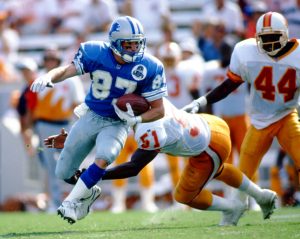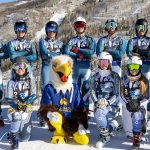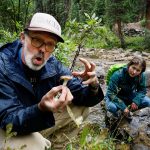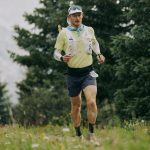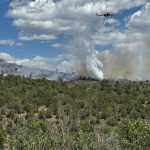Battle Mountain and Buffs great Jeff Campbell is headed to the University of Colorado Athletic Hall of Fame
Huskies great starred in Boulder as a WR and returner before playing five seasons in the NFL
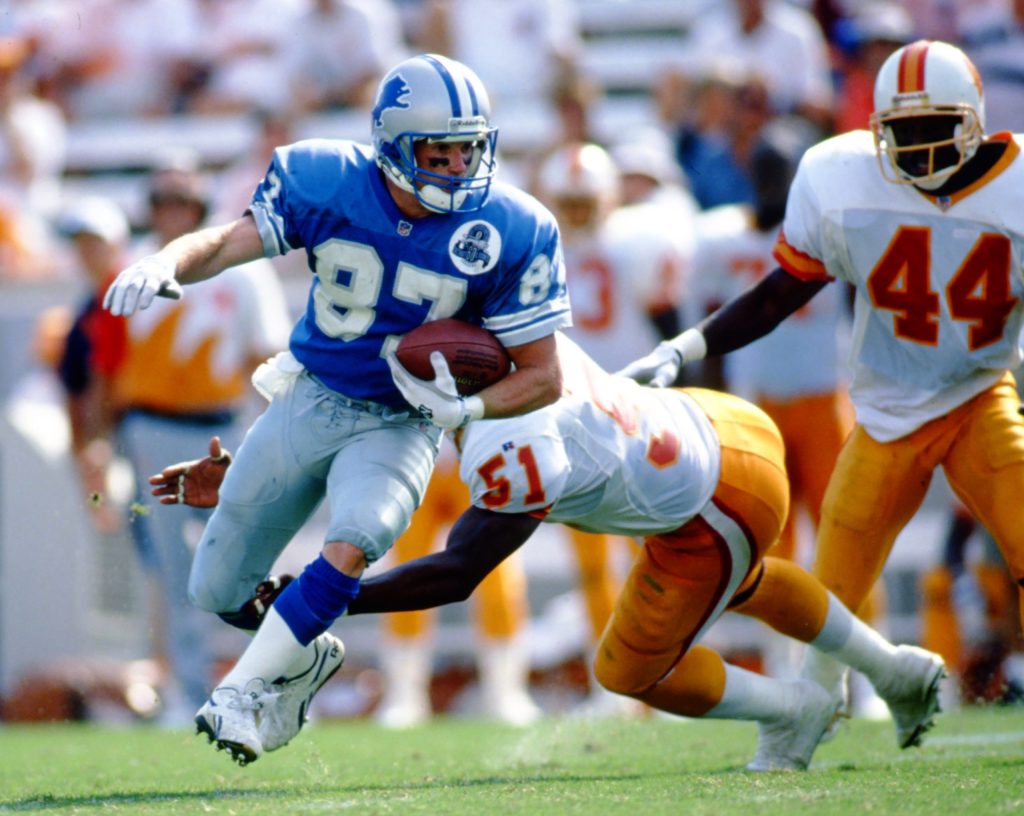
Allen Kee/AP file
Just a chance. That’s all Jeff Campbell ever wanted.
Hailing from a mountain town known for producing great skiers, not football players, the former Battle Mountain High School star turned one golden opportunity to walk on at the University of Colorado in 1986 into a full scholarship seven days into his first fall camp.
He then parlayed his full ride into a stellar four-year run in Boulder during the greatest era of CU football, helping the Buffs reach the Orange Bowl in Miami to play for the 1989 national title.
Thirty-nine years after making the team as a 5-foot-9, 155-pound freshman known as “Soupie,” Campbell has earned a spot among the Buffs’ all-time greats. He’ll be inducted in November into the University of Colorado Athletic Hall of Fame with 10 other CU legends, including football stars Mason Crosby and Barry Remington.
“It’s the biggest honor I’ve ever had in my life because it was the biggest dream I had,” Campbell said. “It was just an incredible bunch of guys. I mean, those teams that were there for four years, they’re my family.”
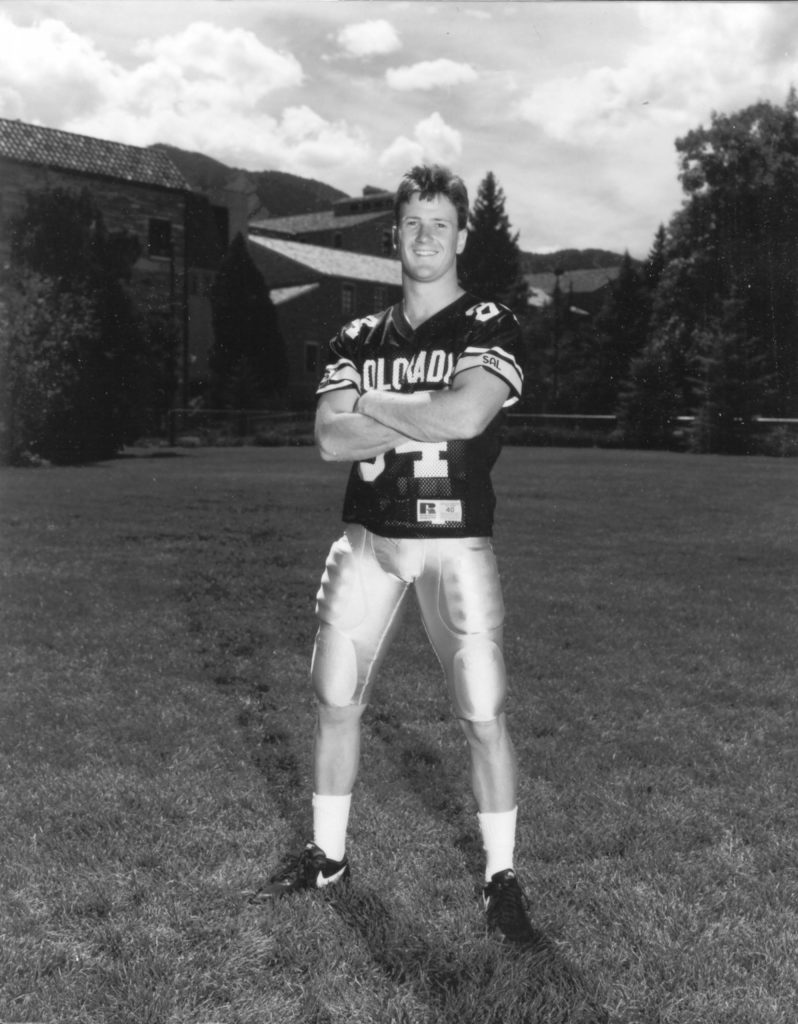
From 2A to D-I
Campbell was a member of the heralded 1986 recruiting class that included prize quarterback Sal Aunese — but he was anything but highly recruited. Lou Tepper, an assistant head coach for CU who scouted in-state talent, saw Campbell play at Battle Mountain and told him he was likely too small to play major college football.
Tepper took a flier on Campbell anyway, offering him a preferred walk-on spot. That’s all Campbell needed to make a first impression. Buffs coaches tried him at running back, quarterback, defensive back and wide receiver in his first four days of camp — only two of which were in pads — before deciding he was best suited to catch passes and return kicks. The latter made him valuable immediately to legendary coach Bill McCartney, who offered him a scholarship after his first week in Boulder.
“So, I returned punts,” Campbell said. “I didn’t end up returning kicks. But I fit that offense that they had. And you know, as we grew in the program, so did the offense. And they started throwing the ball around a little bit more. And guys like me and Mike Pritchard started catching some more balls, which was great.”
Campbell, who roomed with Aunese, passed on a redshirt year and played as a true freshman. He was an immediate contributor to the program’s rise to becoming a national power in the old, dusty Big 8, where McCartney’s Buffs battled for supremacy against the hated Nebraska Cornhuskers. Some of Campbell’s biggest moments came in the biggest games against Big Red. In the 1986 game against the third-ranked Huskers, Campbell took a wobbling pitch on a reverse and weaved his way for 39 yards into the end zone in a 20-10 upset shocker for the Buffs in Boulder.
In the 1989 game against No. 3 Nebraska in Boulder, Campbell had punt returns of 47 and 55 yards, both setting up touchdowns that gave CU leads at the time of 14-7 and 24-14. The No. 2 Buffs would hold on to win, 27-21, and finish the season 11-0 to face Notre Dame in the Orange Bowl on New Year’s Day 1990. That dream season ended with a thud as the Buffs fell, 21-6, to the fourth-ranked Fighting Irish.
Between rushes, receptions and punt returns, Campbell amassed 139 touches for 2,186 yards during his four years in Boulder, averaging an absurd 15.7 yards per play, with seven touchdowns. Even crazier is his 28.6-yard average on 28 catches for 802 yards.
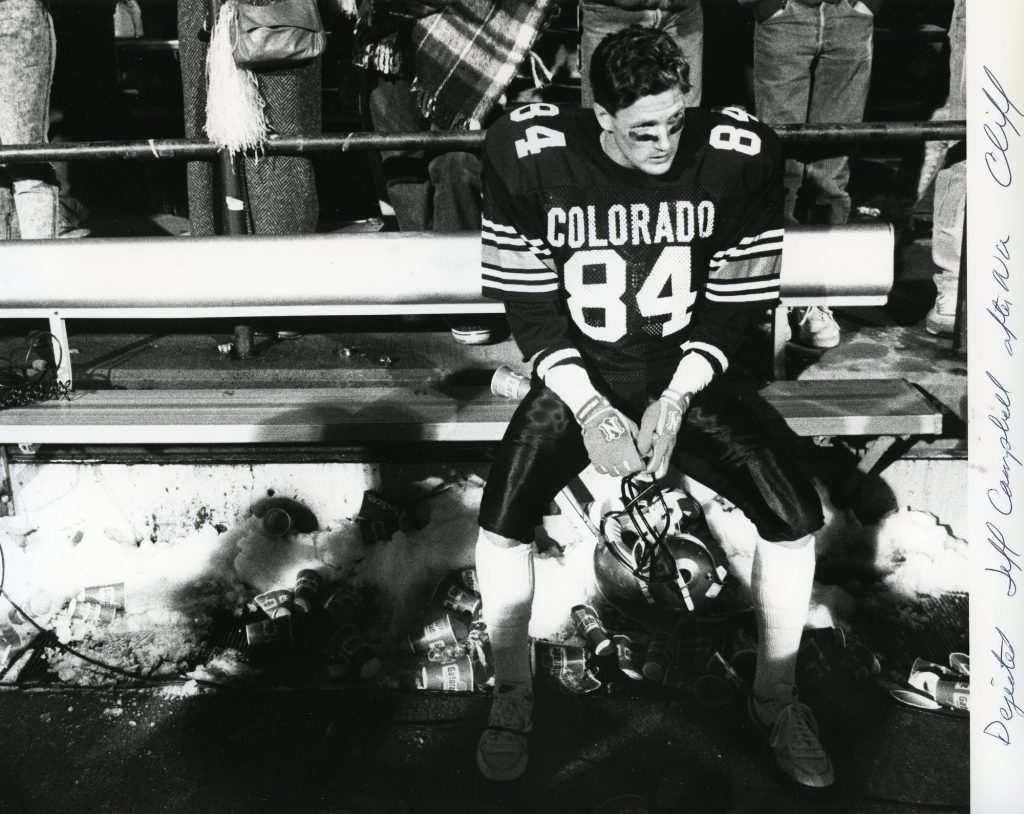
The Buffaloes went 32-15 during his four seasons, and though he never claimed the national title ring that CU set out to win for the ailing Aunese in the 1989 season, Campbell said he has no regrets. In March of 1989, doctors diagnosed Aunese with a rare form of inoperable stomach cancer and he died in a Denver hospital on Sept. 23, 1989.
In the 1990 season, Campbell’s rookie season in the NFL, CU would return to the Orange Bowl and face Notre Dame again to win a share of its only national title in school history, finishing 11-1-1 with a 10-9 victory.
“The group that I came in with, we were all very, very different, all from very, very different backgrounds,” Campbell said. “And for some reason, that group just gelled right away. Some of the bus trips that we had to and from the airport and plane flights and just the laughs that got going on there. Just starting to learn about each other’s families and meeting parents and brothers and sisters. It just became this unbelievably unique situation. And then when Sal died, those relationships even got tighter because we had to kind of pull our fences in a little bit and stay out of the mainstream of school.”
Campbell said those Buffs teams lived up to Coach Mac’s ideal of having “one heartbeat.”
“We all stayed together. It was just this incredible group of kids that all came together, and it didn’t matter what your background was,” he said. “It didn’t matter where you came from. We loved each other. And I think that’s why we were so good.”
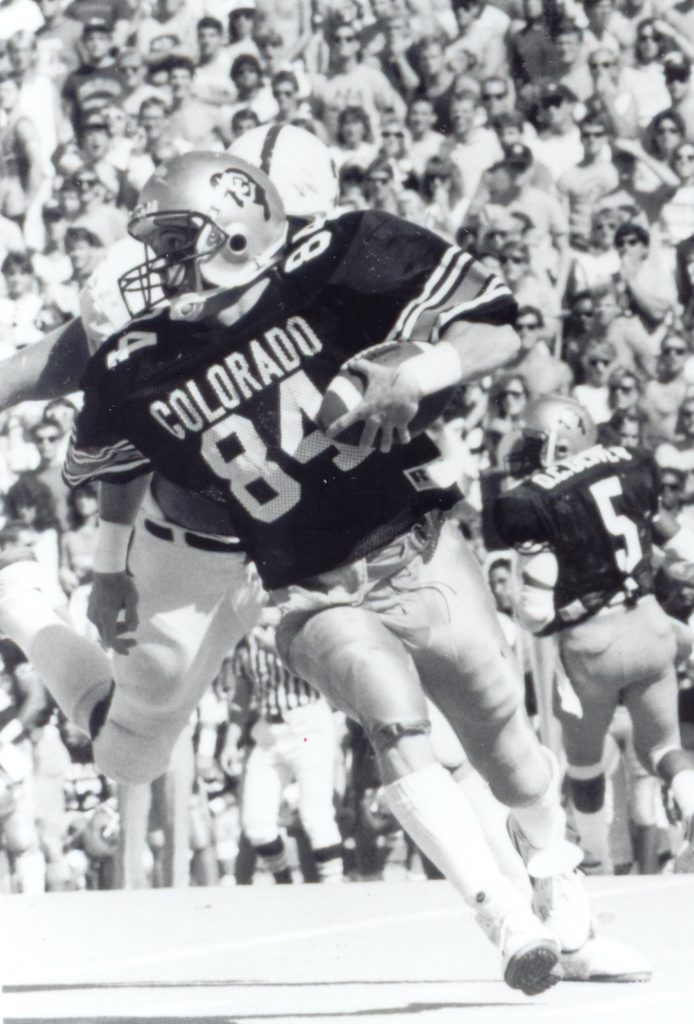
Making it to the NFL
Campbell is already in one Colorado Hall of Fame. For his exploits at Battle Mountain, where he starred in every sport he played, he was inducted into the Colorado High School Activities Association Hall of Fame with the Class of 2016.
At Battle Mountain, he was a two-time state track champion in 1985 and 1986 in the 100 and 200 meters. On the gridiron, he was 2A Co-Player of the Year in 1985. He lettered in football and track all four years in high school and once in basketball. He even won two music letters for marching with the band at halftime in his football uniform.
Campbell was also a standout hockey player who was one of 75 invited to try out for the 1985 US Junior National Ice Hockey team, though he didn’t make the final cut. He said he seriously considered pursuing hockey after high school, but chose football instead after attending a recruiting meeting in Boulder as a junior, where he had his first interaction with McCartney.
“Coach Mac came in and spoke and a couple of his players were in there that spoke,” Campbell said. “When he got up there and started talking, I mean, even in a recruiting meeting, I wanted to run through the wall for him. He just had a way about him that motivated my fire in my body like nobody ever had. And I thought, ‘I want to play for him. I want to go get my shot to go play for that guy with that program.'”
The best athlete to ever play at Battle Mountain, Campbell said he didn’t know the nuances of the game when he arrived in Boulder, and the idea of playing in the NFL was a far-off dream.
“I really didn’t know a lot about coverage and different defenses and how to take advantage of those,” he said. “So, I basically started from square one, learning it at that point. It was drinking through a fire hydrant for a while there, but I picked it up fast, and I started to really study and learn. And I had incredible coaches.”
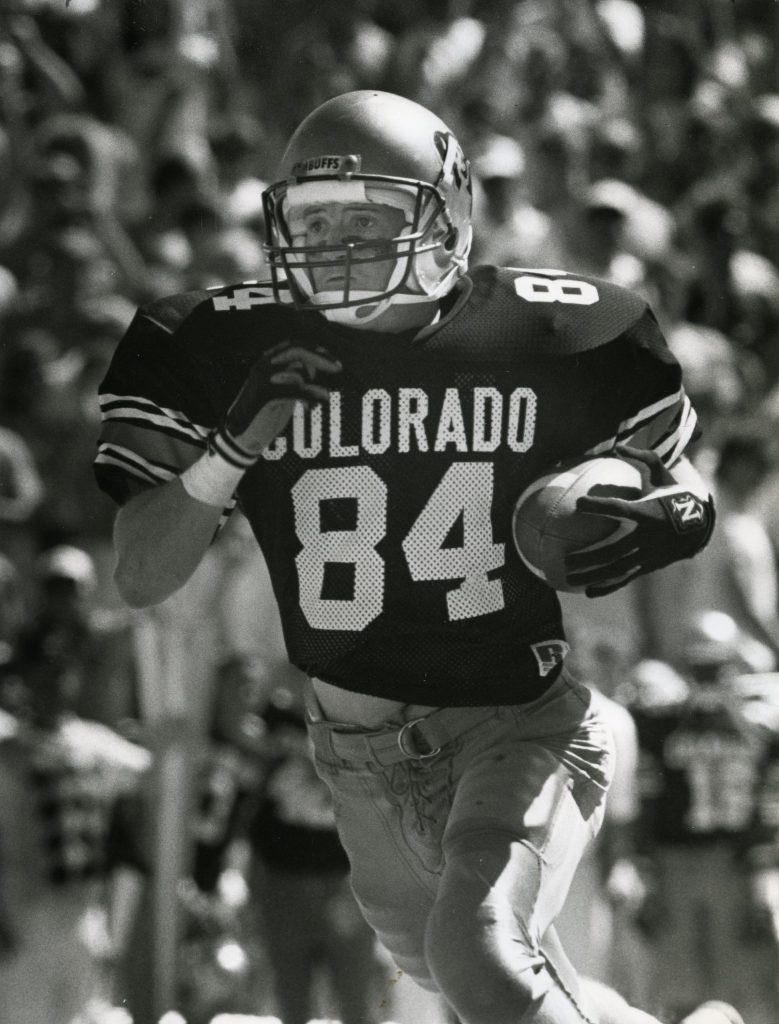
What made him indispensable were his quick feet and his ability to make people miss with the ball in his hands. As he learned the game, Campbell said he committed to living in the weight room in the offseason.
“I thought to myself, ‘I’m just going to dedicate myself to chasing this dream that I wanted my whole life.’ So I did. I didn’t come home,” he said. “I went to school year-round. From my sophomore year through my senior year, I never came home. I just committed to it and stayed in the weight room and got myself in really good shape and watched a ton of film and really started to understand what it was going to take to be a professional athlete.”
Following his senior season, Campbell was invited to the 1990 East-West Shrine Game where scouts from every NFL team watched him catch three passes for 27 yards. That April, he was selected in the fifth round by the Detroit Lions in the 1990 NFL Draft (118th overall) and graduated from CU in May with a bachelor’s degree in Sociology.
Campbell played with the Lions for four seasons (1990-93) and finished his NFL career in 1994 with the Broncos. All told, he appeared in 68 NFL games, catching 37 passes for 517 yards (14 yards per) with four touchdowns.
Not bad for a 5-foot-9 kid from a world-class ski town.
“I was able to play at home in front of my mom and my family and all my friends and to become friends with all these other kids from Colorado and California and Texas,” said Campbell, who lives on the Front Range but still regularly visits Vail to ski and see his mother. “And no, it didn’t get any better. I mean, I got to bring those guys home, and we all hung out on Fourth of July together in Vail. And I mean, it was just this incredible experience. If I could go back and do anything in my life all over again with no changes, I would go right back there.”

Support Local Journalism

Support Local Journalism
Readers around Glenwood Springs and Garfield County make the Post Independent’s work possible. Your financial contribution supports our efforts to deliver quality, locally relevant journalism.
Now more than ever, your support is critical to help us keep our community informed about the evolving coronavirus pandemic and the impact it is having locally. Every contribution, however large or small, will make a difference.
Each donation will be used exclusively for the development and creation of increased news coverage.
